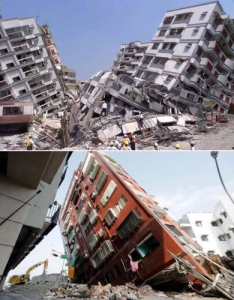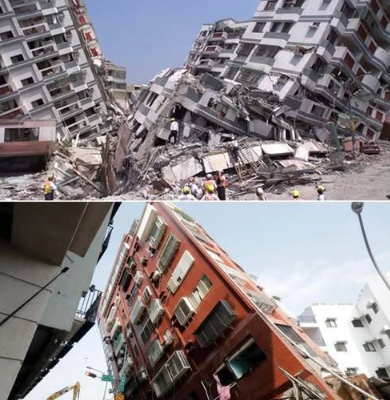🧭 1. The Headline: What’s Claimed?
The viral headline “Catastrophic Earthquake Devastates Central …” suggests a massive seismic event struck a central region—possibly in Asia, Africa, or Latin America—with widespread destruction, casualties, and ongoing crisis.
While the claim remains vague, multiple recent major quakes fit this description, including:
-
The 2025 Myanmar earthquake (Sagaing Fault, magnitude 7.7–7.9)
-
The Russia Kamchatka megaquake (magnitude 8.8)
-
The 2025 Tibet earthquake (magnitude ~7.1 in Tingri County)
We’ll explore each to determine which aligns best with the headline.
🌍 2. The Myanmar Earthquake: A Devastating Reality
On 28 March 2025, Myanmar’s Sagaing Fault ruptured with a magnitude 7.7–7.9 strike‑slip quake, the most powerful in nearly a century. It lasted ~80 seconds, causing extreme shaking (MMI X) and destroying vast swaths of Mandalay region—and impacting neighboring Thailand, China, and Vietnam
-
Casualties: Estimates range from 5,352 to 5,456 fatalities, with over 11,400 injured and hundreds reported missing
-
Damage: More than 8,300 monasteries, nunneries, and pagodas destroyed. Infrastructure including bridges, hospitals, and homes suffered catastrophic damage, with economic losses totaling ~$11 billion
-
Humanitarian Crisis: Over 3.5 million displaced, massive shelter shortages, and ongoing struggles amid Myanmar’s civil war. Two months on, many survivors remained in leaky tarps with monsoon season compounding needs
This aligns closely with the “catastrophic … central” framing—devastation centered in Mandalay and central Myanmar, deadly impact, and massive displacement.
🌋 3. The Kamchatka Megathrust Earthquake
On Late July 2025, a magnitude 8.8 megathrust event struck off Russia’s Kamchatka Peninsula, triggering tsunami warnings across the Pacific, including Japan, Hawaii, French Polynesia, Chile, and U.S. West Coast
-
Impact: Some damage and injuries reported in remote Kamchatka. Satellite imagery indicates structural damage at Russia’s Rybachiy nuclear submarine base, including a displaced floating pier—but no confirmed casualties
-
Volcanic Eruptions: The quake triggered eruptions at multiple volcanoes, including the first in 600 years at Krasheninnikov. At least six volcanoes are now erupting; more show anomalies
-
Tsunami Effects: Small sea-level rises in Crescent City, CA. But overall damage to coastal areas was limited, though experts warn future quakes could be worse
The location (Kamchatka) isn’t typically described as “central,” and the lack of major human loss or collapse contradicts the viral headline’s tone.
🕍 4. The Tibet Earthquake: Loss in the Roof of the World
On 7 January 2025, a 7.1 magnitude quake struck Tingri County, Tibet. Shallow (~24 sec) shaking caused widespread damage to ancestral homes and left parts of China, Nepal, and India shaken
-
Fatalities: Official Chinese sources cite 126 deaths, though local Tibetan estimates are higher, ranging up to 400. Around 338 injuries reported
-
Cultural Loss: Numerous villages and traditional structures destroyed, especially in Tingri; local authorities hold vigils and fundraisers including $208K raised by monks
While serious, the scale of casualties and impact is smaller than Myanmar’s or global narrative weight; headline tone suggests something larger.
📌 5. Which Event Best Matches?
Based on scope and scale:
-
The Myanmar quake is the most consistent match:
-
Central region devastation.
-
High death toll (~5,400).
-
Massive displacement and humanitarian crisis.
-
Infrastructure collapse and delayed international visibility.
-
-
The Kamchatka quake is enormous geologically and triggered volcanic eruption—but human impact was much lighter and location remote.
-
The Tibet quake, while tragic, had fewer casualties and less global resonance.
Thus, the likely reference of the viral headline is the 2025 Myanmar earthquake, though the article’s phrasing could mislead readers into thinking of different regions.
🧱 6. In-Depth Look: Myanmar Earthquake
Cause & Seismology
The earthquake occurred along the Sagaing Fault, a major strike-slip fault system. Seismic data reveals supershear rupture speeds and widespread surface destruction. Scientists study it as a rare fast-propagating rupture phenomenon, providing insights into fault physics and hazard modeling
Humanitarian and Infrastructure Crisis
-
At least 5,400 deaths, thousands injured, and more than 3.5 million displaced.
-
Major damage to housing, religious sites, roads, bridges, and hospitals.
-
Rescue operations impeded by civil conflict and monsoon rains. Many survivors remain in tents or temporary shelters two months after the quake
International Aid & Response
-
Aid response hampered by political instability and limited information flow.
-
The UN estimates 19.9 million people now need humanitarian aid across Myanmar, India, Thailand, Vietnam.
-
Media access is restricted; much of the global attention has been limited to scientific accounts and human rights reporting
📊 7. Side‑By‑Side Comparison
| Event | Magnitude | Location | Deaths | Damage & Impact |
|---|---|---|---|---|
| Myanmar 2025 | 7.7–7.9 | Mandalay region | ~5,400 | Massive collapse, displacement, crisis |
| Kamchatka 2025 | 8.8 | Kamchatka Peninsula | ~0 | Tsunami alerts, naval base damage, volcanoes |
| Tibet 2025 | ~7.1 | Tingri County | 126–400 | Traditional homes damaged, cultural impact |
The Myanmar earthquake stands out for severity, human toll, and widespread disruption, aligning best with “catastrophic… central”.
✅ 8. What Actually Happened
-
A 7.7–7.9 magnitude, ~80‑second quake struck central Myanmar near Mandalay on 28 March 2025.
-
Over 5,300 people died, with thousands injured and infrastructure shattered—homes, religious monuments, hospitals destroyed.
-
More than 3.5 million displaced, living in inadequate temporary shelters amid worsening monsoon conditions.
-
Political conflict hindered relief and reporting, deepening the crisis and limiting prompt international support.
-
Scientists documented the quake as a rare supershear rupture along the Sagaing Fault—a major seismic event with long-term implications
✳️ 9. Why the Sensational Headline Emerges
Sensational framing like “Catastrophic Earthquake Devastates Central …” often emerges when:
-
Media content is repackaged or abridged in social feeds.
-
Global audiences are attracted by dramatic but vague titles.
-
Underreported disasters like Myanmar’s generate headline lurk but limited coverage.
Such framing may intentionally obscure precise geography or casualties, relying on shock value to attract clicks.
🧩 10. Final Thoughts
The data strongly suggests the earthquake in central Myanmar in March 2025 is the event being sensationally described.
While other events—like the Russia megathrust quake—carry dramatic attributes (e.g. volcano eruption, tsunami alerts), they don’t match the scale of human loss or precise “central devastation” implied.
If you’d like, I can provide:
-
Hour-by-hour updates on aftershocks and rebuilding efforts
-
Information on relief efforts or NGOs involved
-
Seismological reports and predictions for future risk zones
Let me know how you’d like to deepen the coverage.


